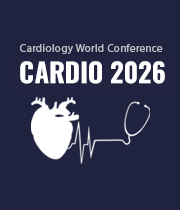Title : Long term effect of false lumen in patients with aortic dissection: A systematic review
Abstract:
Background: Aortic dissection remains one of the most life?threatening cardiovascular emergencies, with a patent false lumen emerging as a critical determinant of long-term outcomes. Persisting false lumen patency has been associated with increased mortality, accelerated aortic enlargement, and a higher incidence of reinterventions, yet its comprehensive impact on patient prognosis has not been fully elucidated.
Methods: A systematic review was conducted in accordance with PRISMA guidelines by searching PubMed, Scopus, and the Cochrane Library from inception to May 2024 for English-language studies. Eligible studies included randomized controlled trials and cohort studies that assessed the long-term effects of false lumen status in patients with Stanford type A and B aortic dissections. Data extraction focused on patient demographics, false lumen status (patent, partial, or complete thrombosis), and clinical outcomes including mortality, aortic dilatation, and reintervention rates. A total of 45 studies encompassing 6,625 patients were included, and data were synthesized using random-effects meta-analytical models alongside narrative analysis.
Results: Analysis revealed that a patent false lumen is a potent independent predictor of adverse outcomes. Patients with persistent false lumen patency exhibited significantly higher mortality—with hazard ratios ranging from 1.70 to 5.6—faster aortic enlargement, and increased rates of reintervention compared to those with partial or complete thrombosis. Subgroup analyses confirmed these associations across both type A and type B dissections. Furthermore, therapeutic strategies such as Thoracic Endovascular Aortic Repair (TEVAR) that promote false lumen thrombosis were linked to improved survival and reduced aorta-specific complications, though the role of anticoagulation therapy remains inconsistent.
Conclusions: False lumen patency significantly compromises long-term survival in aortic dissection patients by accelerating adverse aortic remodeling and necessitating further interventions. These findings underscore the imperative for early detection and tailored management strategies, and they highlight the need for future multicenter randomized trials and advanced imaging techniques to optimize therapeutic approaches and improve patient outcomes.
Keywords: False Lumen, Aortic Dissection, Mortality, TEVAR, Thrombosis, Reintervention, Aortic Remodeling.




